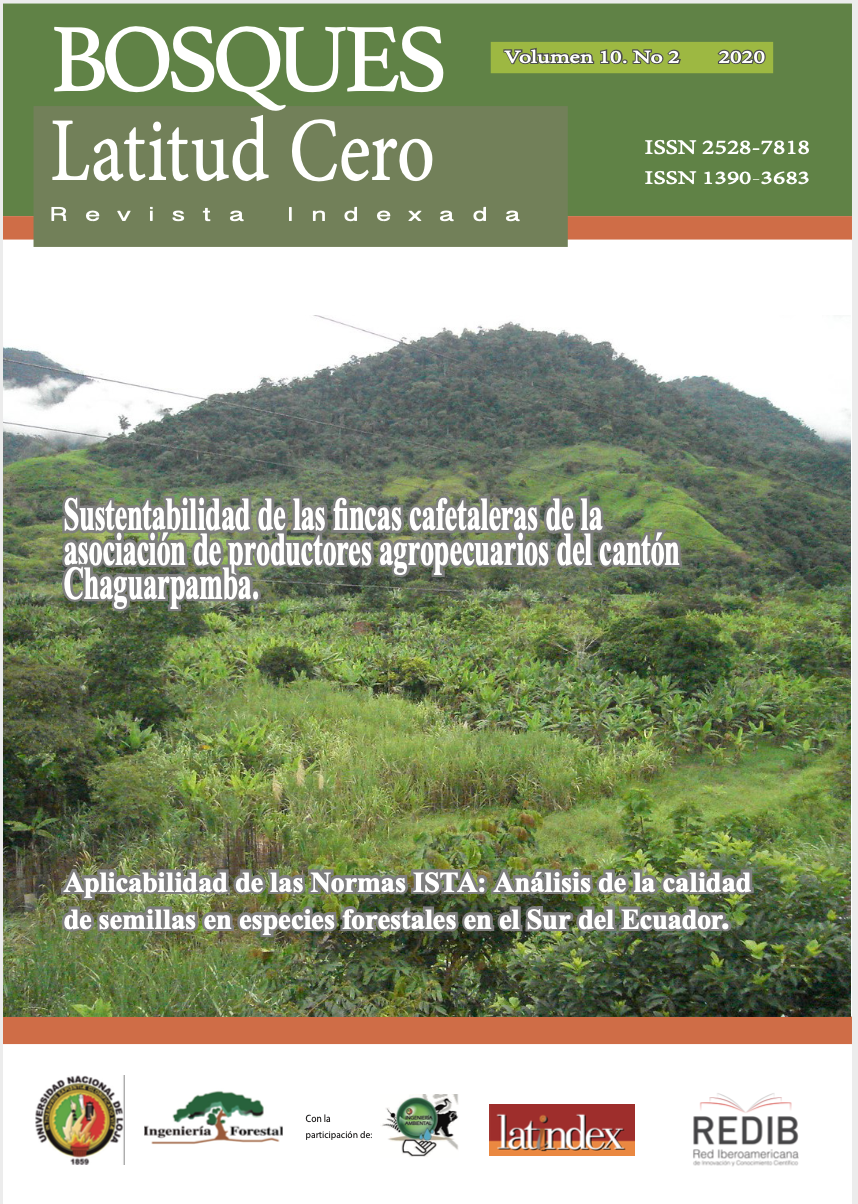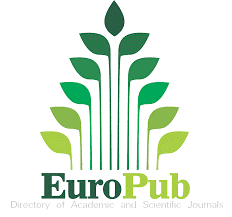Plant species present in 70 000 hectares of the Semi-arid Chaco as potential seedbeds for the natural regeneration of the ecosystem
Keywords:
Chaco, South America, desertification, deforestation, overgrazingAbstract
Deforestation of the native forests of South America occupies the first place in the world ranking of this scourge. Deforestation in the Gran Chaco due to the extraction of wood, coal, and overgrazing has led to the original forest becoming impoverished in its resources with the presence of widespread genetic erosion of plants, animals, and soil. The objective of this work was to determine what remaining species could serve as seedbeds that allowed the regeneration of the ecosystem in two farms with 70 thousand hectares. The presence of 85 species was identified in 18 sites, 10 in El Tunal and 8 in Las Pirguas / Barrealito. 52% of the species in El Tunal are restricted to only one site, while in Las Pirguas / Barrealito only 25.5% are. The Biodiversity Index of all the surveyed sites in El Tunal and Las Pirguas / Barrealito varied between 6-40, and 29-47, respectively. The dominant tree in terms of presence in the farms studied was the Schinopsis quebracho-colorado with a presence in 60% of the sites in El Tunal, and 75% in Las Pirguas / Barrealito, followed by Caesalpinia paraguariensis with a presence of 50 % and 62.5% for the first and second of the farms, respectively. The Standard Deviation of the frequency of the species showed a greater distribution in Las Pirguas / Barrealito than in El Tunal. Of the species surveyed, at least 20 are used by cattle and / or goats as forage.References
Abril, A. y Bucher, E. H. (1999). The effects of overgrazing on soil microbial community and fertility in the Chaco dry savannas of Argentina. Applied Soil Ecology 12:159-167.
Ayerza (h), R. (2017). Cattle production in Arid Lands, sustainable, production opportunity. Editorial Hecho a Ojo, La Rinconada, Santa Elena, Ecuador, 206p.
Ayerza (h), R. (2019). The forest and the livestock in South America: Productivists vs. environmentalists, Buenos Aires, Argentina (unpublished), 10p.
Bianchi, A.R., C.E. Yáñez, (1992). Las precipitaciones en el Noroeste Argentino. 2da. edición. INTA, EEA Salta. 384 p.
Cabrera, A. L. (1976). Regiones fitogeográficas argentinas. Enciclopedia Argentina de Agricultura y Jardinería, Editorial ACME, Buenos Aires, Argentina.
Chakravarty, S., Ghosh, S. K., Suresh, C. P., Dey, A. N. and Shukla, S. (2012). Deforestation: Causes, Effects and Control Strategies, Global Perspectives on Sustainable Forest Management. Bajado el 17/09/2019 desde http://www.intechopen.com/books/globalperspectives-on-sustainable-forest- management/deforestation-causes-effects-and-control-strategies
Defensor del Pueblo de la Nación. (2009). Deforestación en la provincia de Salta - Informe Especial. Defensoría del Pueblo, Buenos Aires, Argentina, 51p.
FAO. (2018). The State of the World’s Forests 2018 - Forest pathways to sustainable development. Food and Agriculture Organization of the United Nations, Rome, Italy, 118p.
Gentry, A. (1982). Patterns of neotropical plant species diversity. Evolutionary Biology 15: 1-84.
Giménez, A. M. y Hernández, P. (2008). Biodiversidad en ambientes naturales del Chaco Argentino. FCF-UNSE y Agencia Nacional de Promoción Científica y Tecnológica, Santiago del Estero, Argentina, 118p.
Giménez A. M., Hernández, P. y Figueroa, M. E. (2017). La diversidad forestal en el Chaco Semiárido. In: Los Bosques actuales del Chaco semiárido argentino, ecoanatomía y biodiversidad: Una mirada propositiva. A. M. Giménez de Bolzón y J. G. Moglia (eds.), Universidad Nacional de Santiago del Estero, Sgo. del Estero, Argentina, pp. 45-80
Giménez, A. M., Hernández, P., Gerez, R. y Ríos, N.A. (2007). Diversidad vegetal en siete unidades demostrativas del Chaco semiárido argentino. Madera y Bosques 13(1): 61-78.
Godoy, J. C. y Ortin, A. E. (2008). Servicio ambiental de almacenamiento de carbono en un bosque en restauración del chaco semiárido salteño. In: Restauración ecológica en la diagonal árida de la Argentina, V. Massara-Paletto, M. Rostagno, G. Buono, C. González y N. Ciano, Guaymallen, Mendoza, Argentina, pp. 338-344
Hubbell, P. y Foster, B. (1986). Commones and rarity in a neotropical forest: implications for tropical tree conservation. In: Conservation Biology: the science of scarcyti and diversity, M. Soulé, M. (ed.). Sinauer Associates, Inc., Suderland, Massachusetts U.S.A., pp. 205-231.
Hueck, K. (1978). Los bosques de Sudamérica: ecología composición e importancia económica. GTZ-Munich, Eschborn, Alemania. 475p.
Karlin, O. U. y Bronstein, G. (1986). Características de los sistemas de producción del árido subtropical argentino. In: V Reunión de Intercambio Tecnológico en Zonas Áridas y Semiáridas. Centro Argentino de Ingenieros Agrónomos, Buenos Aires, Argentina, pp. 439-445.
Leake, A., Lopez, O. E. y Leake, M. C. (2016). La deforestación del Chaco Salteño. Fundación Refugio, SMA Ediciones, Salta Argentina, 60p.
Meffe, G. K. y Carroll, C. R. (1997). Principles of Conservation Biology. Sinauer Associates Inc., Sunderland, Massachusetts, U.S.A., 729p.
Morello, J. y Saravia-Toledo, C. J. (1956). El bosque saqueado. Universidad Nacional de Tucumán, Cine Documento No. 32, S. M. de Tucumán, Tucumán, Argentina.
Morello, J. y Saravia-Toledo, C. J. (1959). El bosque chaqueño: II – La ganadería y el bosque en el oriente de Salta. Revista Agronómica del Noroeste Argentino 3(1- 2):209-258.
Nadir, A. y Chafatinos, T. (1990). Los suelos del N.O.A. (Salta y Jujuy), Tomos 1, 2. Salta, Universidad Nacional de Salta, Salta, Argentina, 123p.
Quiroga, E. Blanco, L. y Orionte, E. (2009). Evaluación de estrategias de rehabilitación de pastizales áridos. Ecologia Austral 19:107-117.
Ragonese, A. E. (1967). Vegetación y ganadería en la República Argentina. Instituto Nacional de Tecnología Agropecuaria, Colección Científica del INTA, Buenos Aires, Argentina, 218p.
Saravia-Toledo, C. J. (1984). Manejo silvo pastoril en el Chaco Noroccidental de Argentina. In: III Reunión de Intercambio Tecnológico en Zonas Áridas y Semiáridas. Centro Argentino de Ingenieros Agrónomos, Buenos Aires, Argentina, pp. 26-50.
USDA. (2019). Bermuda Grass Cynodon dactylon (L.) Pers. Plant Fact Sheet. Unites States Department of Agriculture, Natural Resources Conservation Service, Washington D.C., U.S,A., 3p.
Vallejos, M., Volante, J. N., Mosciaro, Vale, M. J., Bustamante, M. L. y Paruelo, J. M. (2014). Monitoreo de desmontes del Chaco Seco Sudamericano. Instituto Nacional de Tecnología Agropecuaria, Buenos Aires, Argentina. Bajado el 25/5/2016 desde http://www.geointa.inta.gob.ar/2014/05/25/monitoreo-de-desmontes-del- chaco- seco-sudamericano/
Downloads
Published
Versions
- 2021-02-24 (2)
- 2020-12-31 (1)
How to Cite
Issue
Section
License
Copyright (c) 2020 Bosques Latitud Cero

This work is licensed under a Creative Commons Attribution-NonCommercial-ShareAlike 4.0 International License.
This work is published under the Creative Commons Attribution-NonCommercial-ShareAlike 4.0 International (CC BY-NC-SA 4.0) license. This means that users may copy, distribute, and adapt the content, provided that proper credit is given to the authors and the journal. Commercial use of the material is not permitted. Additionally, any derivative work must be distributed under the same license. This license ensures open access to knowledge, promoting the dissemination and reuse of published works for non-commercial purposes, respecting authorship, and ensuring the free circulation of content under fair terms.





























